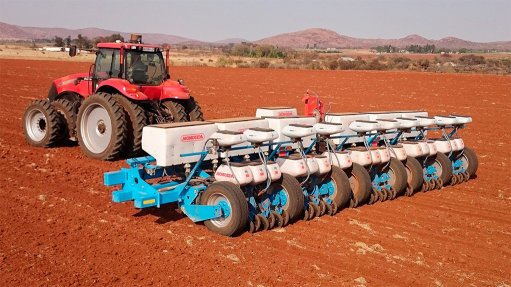
Photo by: Lukie van der Merwe
Agriculture company Monsanto has shelled out R11-million to acquire two of the “most technologically advanced” precision maize seed planters – unique to South Africa – to facilitate more effective, accurate and cost-effective planting.
The equipment includes two Monosem 17-row precision vacuum planters, two three-row planters and two 212 kW Case 290 NX eight-wheel-drive tractors.
Monsanto explained in a statement on Tuesday that by using one planter, male seed could now be planted simultaneously between female seed as needed. Previously, two different planters were required to plant male and female rows.
“We now have 17-row planters on a single tool bar where we can control and monitor each row independently in the cabin of the tractor. This gives us a female area of 100%. The traditional method only achieved 83%.
“This is much more cost effective [when planting] larger areas of seed in less time, with higher yields, to meet the growing local and export demand for our maize seed,” said Monsanto field cultivation equipment manager Lukie van der Merwe.
To produce more pollen the two three-row planters could be employed to plant male seed again five days after the first planting, Monsanto added.
The planters had no chains or belts to operate the various functions. All operations were controlled hydraulically. The plant population could, while the planter was moving, be adjusted from 15 000 to 115 000 plants/ha. Row widths were 76 cm and 40 ha/day could be planted on average; however, on a good day up to 70 ha to 80 ha could be planted.
The tractor drivers had been trained by Monsanto to interpret the precision monitor in the cabin that displayed every function on the planter – seed, fertilizer, pesticide applications and plant population.
Using GPS technology, the tractor automatically maintained a straight course. Before planting started, a drive was taken around the field to record the positions of the boundaries. The planter was also programmed to not waste seed when turns were made on the boundaries by automatically cutting out the planter bins, one by one.